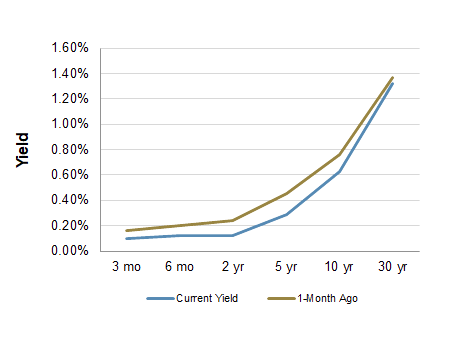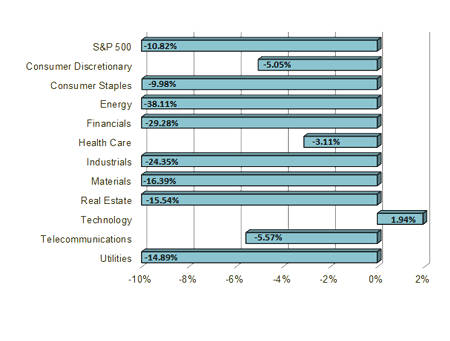Chief Economist Scott Brown discusses the latest market data.
The April Employment Report was flawed, but signaled a sharp deterioration in labor market conditions. Nonfarm payrolls fell by 20.5 million, nearly erasing all of the job gains since the last recession. The unemployment rate rose to 14.7%, but the Bureau of Labor Statistics noted that a classification problem reduced the figure by five percentage points (in other words, it should have been closer to 20%). The employment/population ratio fell to 51.3% from 60.0% in March and 61.1% in February. Average hourly earnings jumped 4.7%, reflecting the high losses of lower-paying jobs.
In other news, unit motor vehicle sales fell 24.5% in April, to an 8.6% seasonally adjusted annual rate (vs. 11.4 million in March and 16.8 million in February). The ISM Non-Manufacturing Index fell to 41.8 in April (vs. 52.5 in March), but the headline figure was boosted by a virus-related increase in supplier delivery times. Business activity, new orders and production fell sharply. Treasury indicated that it would borrow nearly $3 trillion in the April-June quarter.
Next week, claims for unemployment benefits are expected to fall further, but the level has remained elevated. The figures should show about 20% of workers (one in five!) filing a claim over the last eight weeks. Retail sales are expected to have fallen further in April. Unit auto sales fell and gasoline prices dropped. However, the Bureau of Census is tweaking the seasonal adjustment on the fly, added uncertainty. Industrial production should post a sharp drop. Aggregate manufacturing hours (from the employment report) were reported to have fallen 17.9%. Inflation reports are expected to reflect lower gasoline prices, but may be a bit mixed otherwise.
Indices
| Last | Last Week | YTD return % | |
|---|---|---|---|
| DJIA | 23875.89 | 24345.72 | -16.34% |
| NASDAQ | 8979.66 | 8889.55 | 0.08% |
| S&P 500 | 2881.19 | 2912.43 | -10.82% |
| MSCI EAFE | 1617.93 | 1657.69 | -20.57% |
| Russell 2000 | 1282.93 | 1310.66 | -23.11% |
Consumer Money Rates
| Last | 1 year ago | |
|---|---|---|
| Prime Rate | 3.25 | 5.50 |
| Fed Funds | 0.00 | 2.39 |
| 30-year mortgage | 3.25 | 4.20 |
Currencies
| Last | 1 year ago | |
|---|---|---|
| Dollars per British Pound | 1.236 | 1.301 |
| Dollars per Euro | 1.083 | 1.119 |
| Japanese Yen per Dollar | 106.28 | 110.10 |
| Canadian Dollars per Dollar | 1.397 | 1.348 |
| Mexican Peso per Dollar | 24.061 | 19.086 |
Commodities
| Last | 1 year ago | |
|---|---|---|
| Crude Oil | 23.55 | 62.12 |
| Gold | 1725.80 | 1281.40 |
Bond Rates
| Last | 1 month ago | |
|---|---|---|
| 2-year treasury | 0.12 | 0.24 |
| 10-year treasury | 0.62 | 0.74 |
| 10-year municipal (TEY) | 1.89 | 2.09 |
Treasury Yield Curve – 05/08/2020

As of close of business 05/07/2020
S&P Sector Performance (YTD) – 05/08/2020

As of close of business 05/07/2020
Economic Calendar
| May 12 | — | Small Business Optimism Index (April) |
| — | Consumer Price Index (April) | |
| May 13 | — | Producer Price Index (April) |
| May 14 | — | Jobless Claims (week ending May 9) |
| — | Import Prices (April) | |
| May 15 | — | Retail Sales (April) |
| — | Industrial Production (April) | |
| — | UM Consumer Sentiment (mid-May) | |
| May 20 | — | Building Permits, Housing Starts (April) |
| May 20 | — | FOMC Minutes (April 28-29) |
| May 25 | — | Memorial Day Holiday (markets closed) |
| June 10 | — | Employment Report (May) |
| June 10 | — | FOMC Policy Decision |
| July 29 | — | FOMC Policy Decision |
All expressions of opinion reflect the judgment of the Research Department of Raymond James & Associates, Inc. and are subject to change. There is no assurance any of the forecasts mentioned will occur or that any trends mentioned will continue in the future. Investing involves risks including the possible loss of capital. Past performance is not a guarantee of future results. International investing is subject to additional risks such as currency fluctuations, different financial accounting standards by country, and possible political and economic risks, which may be greater in emerging markets. While interest on municipal bonds is generally exempt from federal income tax, it may be subject to the federal alternative minimum tax, and state or local taxes. In addition, certain municipal bonds (such as Build America Bonds) are issued without a federal tax exemption, which subjects the related interest income to federal income tax. Municipal bonds may be subject to capital gains taxes if sold or redeemed at a profit. Taxable Equivalent Yield (TEY) assumes a 35% tax rate.
The Dow Jones Industrial Average is an unmanaged index of 30 widely held stocks. The NASDAQ Composite Index is an unmanaged index of all common stocks listed on the NASDAQ National Stock Market. The S&P 500 is an unmanaged index of 500 widely held stocks. The MSCI EAFE (Europe, Australia, Far East) index is an unmanaged index that is generally considered representative of the international stock market. The Russell 2000 index is an unmanaged index of small cap securities which generally involve greater risks. An investment cannot be made directly in these indexes. The performance noted does not include fees or charges, which would reduce an investor’s returns. U.S. government bonds and treasury bills are guaranteed by the US government and, if held to maturity, offer a fixed rate of return and guaranteed principal value. U.S. government bonds are issued and guaranteed as to the timely payment of principal and interest by the federal government. Treasury bills are certificates reflecting short-term (less than one year) obligations of the U.S. government.
Commodities trading is generally considered speculative because of the significant potential for investment loss. Markets for commodities are likely to be volatile and there may be sharp price fluctuations even during periods when prices overall are rising. Specific sector investing can be subject to different and greater risks than more diversified investments. Gross Domestic Product (GDP) is the annual total market value of all final goods and services produced domestically by the U.S. The federal funds rate (“Fed Funds”) is the interest rate at which banks and credit unions lend reserve balances to other depository institutions overnight. The prime rate is the underlying index for most credit cards, home equity loans and lines of credit, auto loans, and personal loans. Material prepared by Raymond James for use by financial advisors. Data source: Bloomberg, as of close of business May 7, 2020, 2020.
Markets & Investing Members of the Raymond James Investment Strategy Committee share their views on...
Markets & Investing Review the latest Weekly Headings by CIO Larry Adam. Key Takeaways ...
Technology & Innovation Learn about a few simple things you can do to protect your personal information...